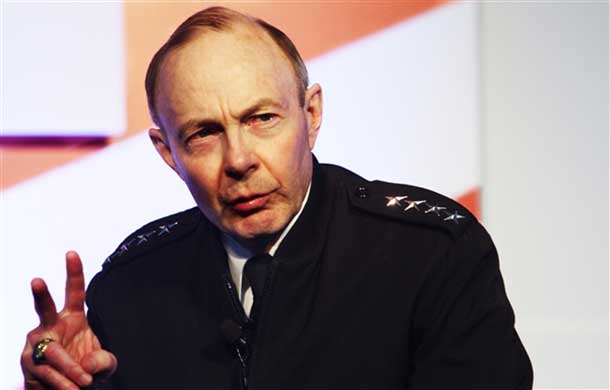

Trans-National Gangs Threat to Homeland Security
WASHINGTON – International News – Transnational criminal gangs based in Mexico and Central America pose a threat to the region, Army Gen. Charles H. Jacoby Jr., the commander of U.S. Northern Command and the North American Aerospace Defense Command, said at the Aspen Security Forum in Colorado yesterday.
The response to the threat has been increased cooperation between the United States and Mexico, Jacoby said.
U.S. Northern Command is a post-9-11 creation dedicated to protecting the homeland. It has geographic responsibility for North America and the Bahamas.
Transnational criminal gangs and associated networks are responsible for many of society’s ills, Jacoby said.
“If you are not worried about the drugs and the 40,000 dead Americans and what they do to our youth” then people should worry about organizations “so ruthless, so violent, so powerful” that they have virtual freedom of movement on the U.S. southern border, he said.
Jacoby said such criminal gangs and organizations can smuggle anything from drugs to guns to unaccompanied children.
“Children are just another product to them,” he said, noting these organizations have undermined and threatened the governance of U.S. partners throughout Central America, the Caribbean and Mexico.
And these gangs are a network, he said. They cooperate when they need to. And the general said he personally believes there is plenty of evidence of links between terrorists and criminal organizations.
“We have learned that the best way to fight a network is with a network,” he said. “Counter-network tactics, techniques, procedures, collection are called for in effective dealing with cartels and other criminal organizations.”
DoD personnel play a role in interdicting drugs in what professionals call the transit zone. There have been record numbers of drug seizures, but officials really have little idea of the impact they are making.
“[The drug cartels] are more powerful, they are more globally interconnected, they are making more money and they are more violent than they ever have been,” Jacoby said.
Meanwhile, he said, efforts designed to shut down these criminal networks continue.
“We know how to take a network apart,” Jacoby said. “We know what the access targets are.” These, he said, are the financiers, logisticians, and operators. All aspects of the network must have pressure placed on them.
The fear calculus in Mexico and Central America is completely wrong, he said. “It’s the Mexican people and the Moms and Dads in Honduras who are afraid, not the criminals,” Jacoby said. “We have to flip that.”
U.S. and Mexican officials need to reevaluate their plans and procedures used to deter international crime networks , he said. “How is our cooperation between law enforcement and the intelligence community,” he asked. The level of cooperation between intelligence and operatives in Afghanistan and Iraq to take down terror networks, the general said, was much closer than it is in the United States.
And the United States and Mexico are having these conversations. In 2006, then-Mexican President Felipe Calderone put the military on the street to combat the cartel violence. The Mexican military turned to the United States to ask for assistance, cooperation and teaming.
This was a sea change in the military-to-military relationship.
The cooperation continued when current Mexican President Enrique Pena Nieto took office.
The military-to-military relationship is still growing, and like any relationship there are fits and starts. “We trained with more than 5,000 Mexican soldiers this year,” Jacoby said.
Mexican military officials also worked with Northcom on their strategy for their border with Guatemala.
And there’ve been some impressive results. Mexican authorities removed the kingpins of the Sinaloa, Zeta and the Gulf cartels.
The U.S. and Mexican militaries learn together, Jacoby said.
“What we’ve cooperated on has helped the Mexican military modernize and become more effective at all of the tasks that they’ve set out for themselves,” he said.
By Jim Garamone





